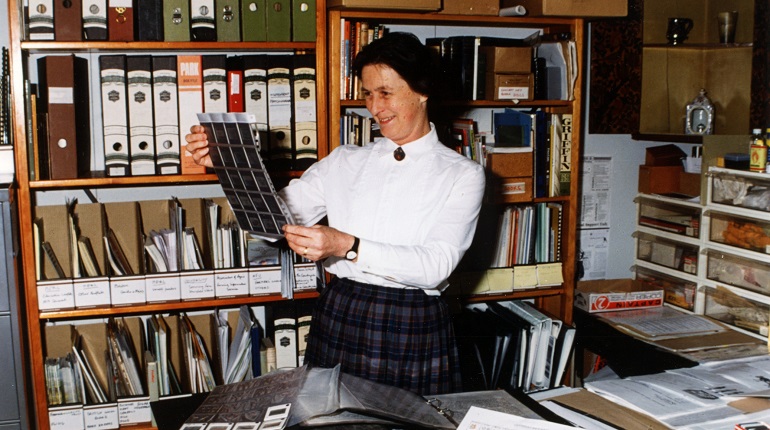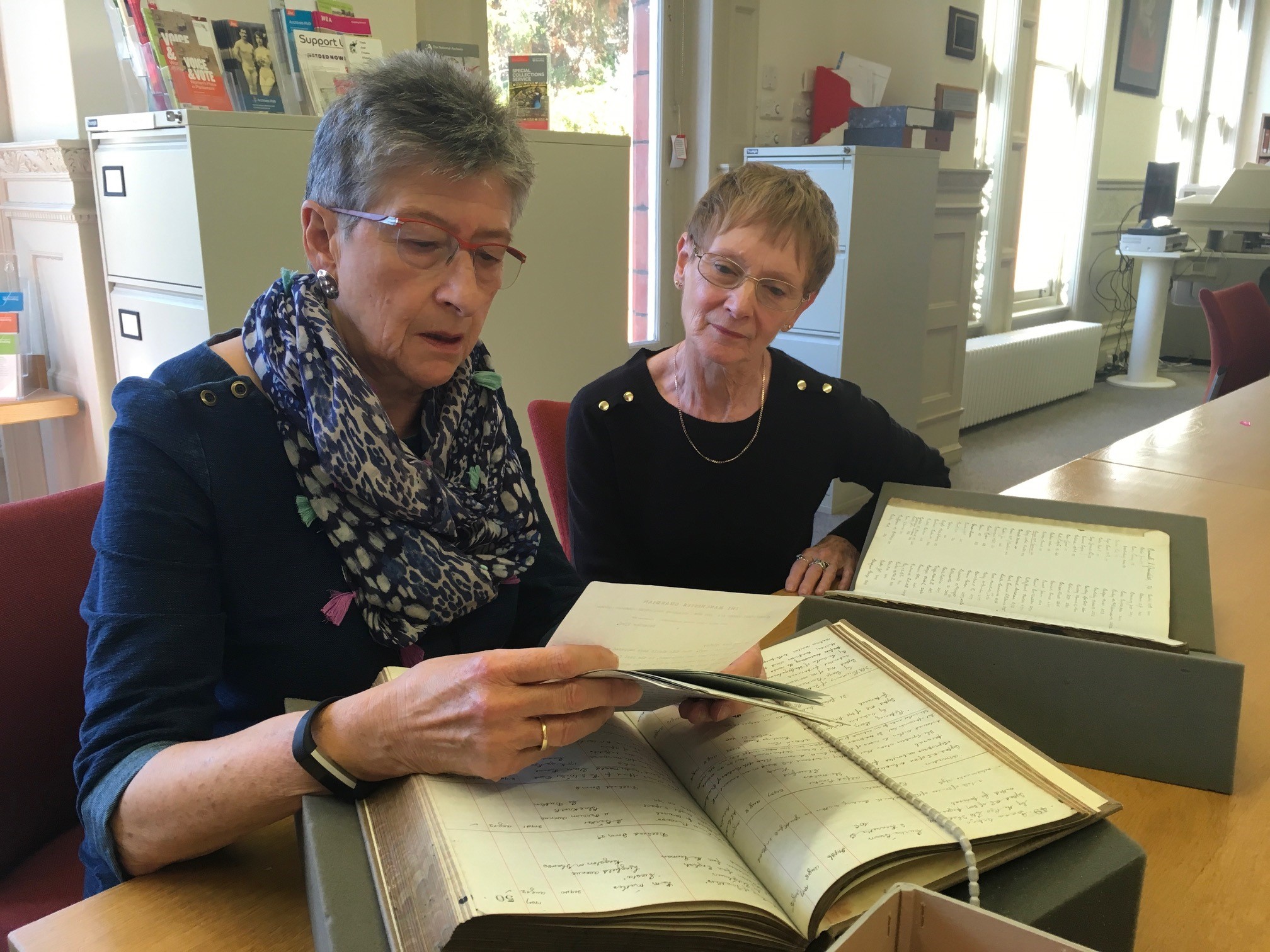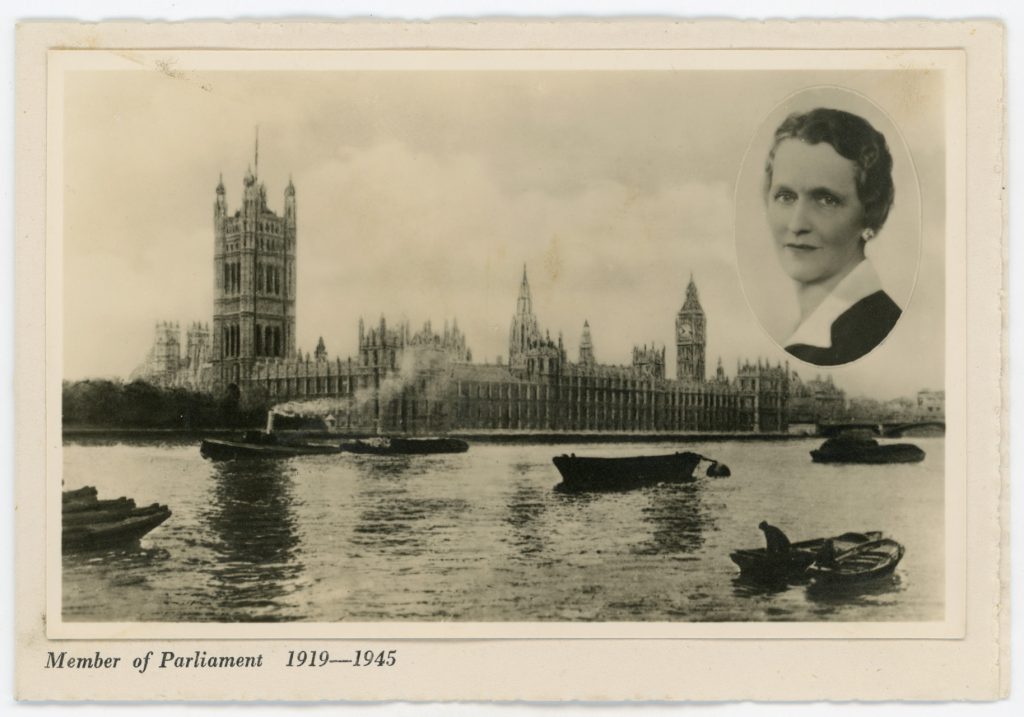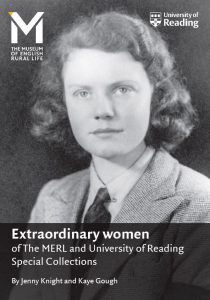Searching for the Extraordinary
a tale of two volunteers let loose in the archives
Heritage Open Days (HOD) were approaching, and my fellow MERL volunteer Kaye and I were anticipating, as we do every year, the fun of taking groups of visitors around our lovely Grade 2 listed building, East Thorpe. It’s now home to The MERL admin. offices, the archives and the reading room, but in times past was the home of Alfred Palmer, of Huntley and Palmer Biscuits, benefactor of the University of Reading and High Sheriff of Berkshire.
This year, however, there was a special request from the HOD organisers. To celebrate the centenary of the Universal Suffrage Act, each venue was asked to include “Extraordinary Women” connected to the property in their tours. There was excitement at the prospect, but also consternation. Who to choose? First there was a long-list (The MERL and the University of Reading being spoilt for choice when it comes to remarkable women) and then a shortlist; discussions in the staff room and lobbying for favourites. Eventually we had six names and six lives to investigate, and Kaye and I were given the opportunity to do our own research into these ladies using the Special Collections. We each took three women from the list to research. Nancy Astor and Lady Eve Balfour may both have been members of the aristocracy with strong and independent views, but could not have been more different. Elizabeth Waterhouse and Lavinia Smith were both devout women who gave enlightened service to their communities, and Doreen Thorp and Jill Betts both demonstrated that they had the versatility and determination to achieve their goals.

The first task was to establish how much information we could find in the archives, but there were other avenues to consider, and not all of the material proved to be paper-based. For example, during a “Google” search, I was delighted to discover an audio archive from the BBC Radio 4’s “Woman’s Hour” programme, of an interview with Lady Eve Balfour. How wonderful to hear her voice! There was also direct oral input. We truly appreciated being able to interview Jill Betts’s husband David, to hear at first hand about her achievements in recognising and rescuing for conservation the wall hangings from the 1951 Festival of Britain. One of the hangings now forms an integral part of the gallery displays at The MERL, and stands as a lasting legacy to Jill.
Then began the hours of work in the reading room, notepads to hand, surrounded by boxes brought up from The MERL archive and the Special Collections. Through our reading, scribbling of notes and ordering of events, the lives and achievements of our six women slowly began to take shape. As we read the letters they had written, and saw the studies they had undertaken, we began to understand the difficulties they had faced. Kaye probably had the most daunting task, in taking on the Astor archive. In the store, this covers a huge number of shelves and reaches to the full height of the racks. How to select the most relevant parts of Nancy Astor’s story from all of this? On one occasion, Kaye requested a file on notable correspondents, to see who Nancy was connecting with. The message came back – did she realise this file alone actually contained sixteen boxes?


There was another challenge. The Friends of the University were kindly providing some funding to assist in the production of a leaflet to hand out to visitors, illustrating the six “Extraordinary Women”. The problem was that we were limited, by printing technicalities, to approximately 300 words per woman to tell their stories. What a requirement, to reduce the essence of these remarkable women to just 300 words each! In some ways this proved the most difficult part, as we both felt a commitment to fully describe these women in all their vivacity. Eventually, after much pruning and cutting and heart-searching, it was done.
Our favourite moments?
For me it was the amusement of discovering that Lady Eve Balfour, activist and pioneer of organic farming, had written three detective novels and had played the saxophone in a dance band. For Kaye, it was the sheer breadth and range of Nancy Astor’s correspondence and contacts, a subject which Kaye hopes to research further for her own interest.

The enjoyment of taking part in this research exercise, despite the deadlines and the odd sleepless night, was worth every minute. The leaflets were to prove a real asset to the tours and were definitely appreciated by the visitors. We like to think we have become mini authorities on “our” women, for each of whom we have developed a real affection. Nothing can quite compare to the excitement of handling documents written and used by someone you are seeking to understand; a real historical figure. These are far from being dusty archives. These are time capsules, a way to share in past lives and come to know these individuals. To hold a piece of history in your hands is rewarding, yes – but also simply amazing.
By volunteer, Jenny Knight
Click here to download a copy of ‘Extraordinary Women‘ leaflet produced by Jenny and Kaye.

